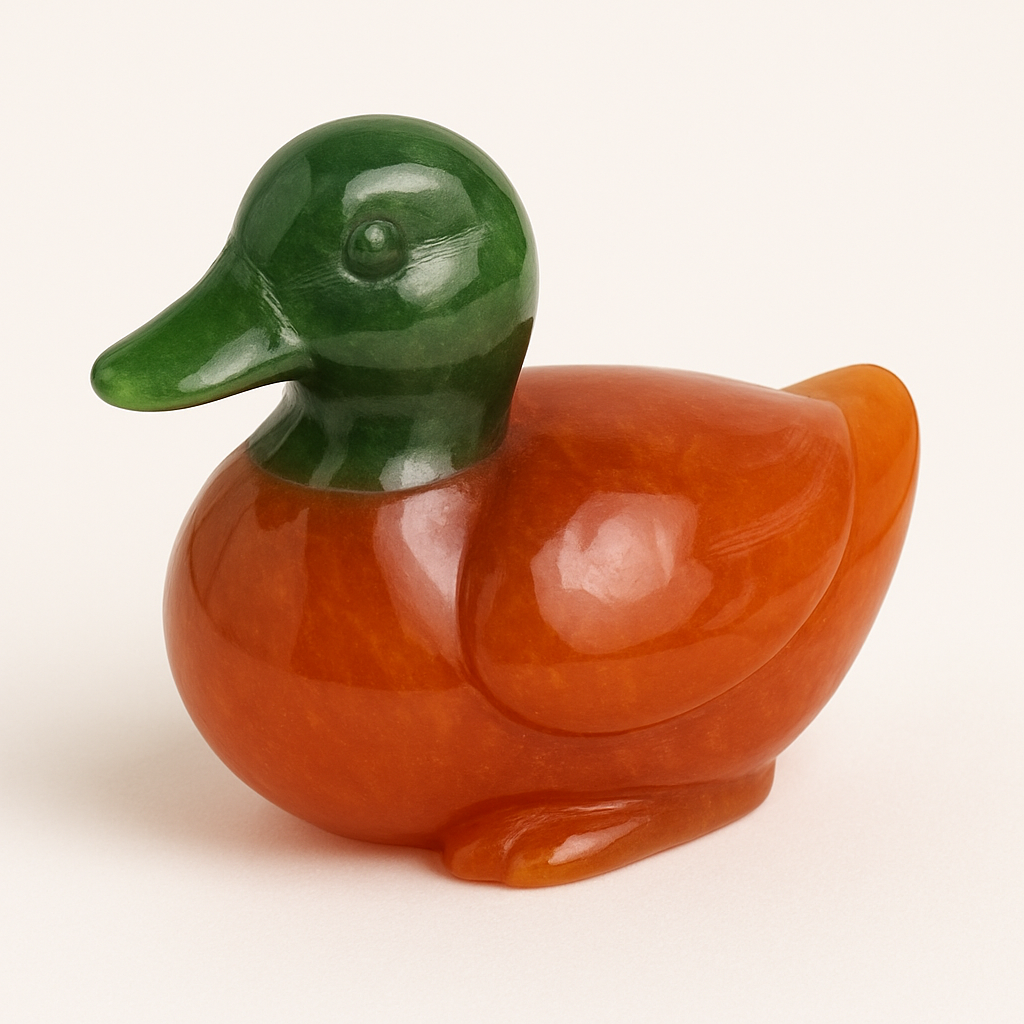
The Symbolism of Ducks
Share
Gliding across still waters, diving below the surface, or waddling awkwardly on land, the duck moves between elements with effortless adaptability. It is neither fierce nor fragile, yet it embodies a quiet resilience, a gentle emotional intelligence, and a capacity to navigate both the surface and depths of experience. The duck teaches the wisdom of balance, the art of emotional navigation, and the value of dwelling in peace while remaining aware of what lies beneath.
To contemplate the duck is to witness a creature that moves without resistance, that lives in water without drowning, in air without dominance, and on land without haste—a being of harmonized feeling and flow.
The Water Walker in Cultural Memory
In many cultures, ducks are symbols of emotional equilibrium, adaptability, and familial devotion. Though not grand in appearance, they are often held with quiet reverence.
In Chinese tradition, the image of a pair of mandarin ducks is a potent symbol of marital harmony, loyalty, and lasting partnership. Their frequent presence in art and ceremony reflects the belief in affection that endures, not through intensity, but through steady, graceful presence.
Among Native American traditions, ducks are considered messengers between the realms of water (emotion) and sky (spirit). They are often seen as beings that bring calm, reminding the people to trust emotional flow and maintain grounded awareness even when navigating inner depths.
In Egyptian symbology, ducks—particularly geese and related waterfowl—were associated with creation, fertility, and the emergence of form from the primal waters.
Wherever it appears, the duck serves not as a force of change, but as a model of how to remain calm, connected, and gentle within change.
Floating, Diving, and the Grace of Everyday Rhythm
Ducks live in constant relationship with the element of water—the archetype of emotion and the subconscious. Yet they do not sink into it. They float, move, dive, and rise again. This ease of transition symbolizes the capacity to feel deeply without being overtaken, to explore emotion without becoming it.
They are creatures of daily rhythm: foraging, tending to their young, flying in formation, communicating through soft, frequent sound. There is no violence in the life of a duck, no grandeur, and yet, there is a natural grace—a complete attunement to the environments they inhabit.
Their migration patterns reflect inner guidance—traveling long distances with precision, relying on unseen instinct to return to what is familiar and nourishing. This movement is not impulsive; it is wise, cyclic, and attuned to greater seasonal forces.
Resonance with the Energy Centers
The duck resonates primarily with the orange-ray energy center—the sacral chakra, which governs emotion, creativity, sensuality, and relational harmony.
Its life is relational—not hierarchical or dominating, but affectionate, fluid, and responsive. The duck’s connection to water, its nurturing behavior, and its ability to move gently between environments all mirror the orange-ray’s essence: to feel, to adapt, and to express emotionally without distortion.
There is also a secondary resonance with the green-ray energy center—the heart chakra, which governs unconditional love, acceptance, and peaceful balance. Ducks often form lasting bonds, show care for their young, and act as communal creatures. Their flight in groups and their peaceful nature reflect the rhythm of unity rather than competition.
Together, these rays—orange and green—express a life built on gentle emotional awareness and heartfelt connection, without force, without resistance.
The Gentle Navigator
To walk with the duck is to learn how to float without drifting, how to move through feeling without drowning, and how to love without possession. It teaches that emotion is not an enemy, but a landscape—meant to be moved through with ease and presence.
The duck reveals that peace is not the absence of motion, but the ability to stay centered while moving—to dive and return, to waddle and fly, and to find beauty in what is simple and cyclical.
It does not race.
It flows.
It does not fight the current.
It becomes part of it.